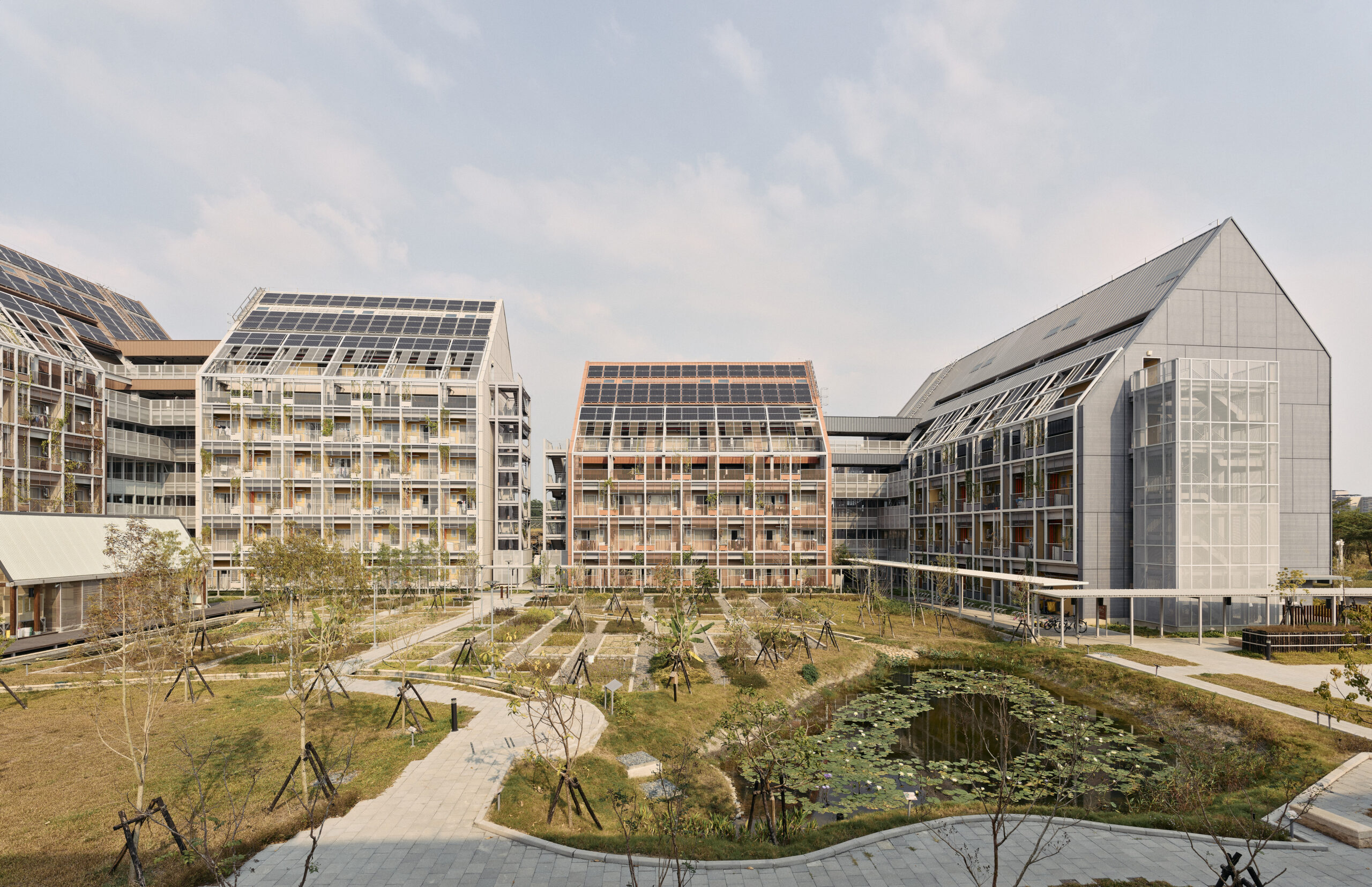architizer.com
Architizer's 13th A+Awards features a suite of sustainability-focused categories recognizing designers that are building a greener industry and a better future. Start your entry to receive global recognition for your work!Urban space has never been neutral. Every square meter of a city is a decision what gets built, what gets paved, and what gets planted. For centuries, food production was an integral part of those conversations. Medieval city walls enclosed orchards and grazing land, ensuring residents had access to fresh produce during sieges. In 16th-century Istanbul, Ottoman planners mandated fig, olive and pomegranate trees in courtyards, embedding agriculture into residential design. Edo-period Japan was the same, with Machiya townhouses extending into elongated gardens that sustained families with rice, vegetables and medicinal plants. By the 19th century, 14% of Pariss land was dedicated to intensive market gardening, supplying the city with over 100,000 tonnes of fresh produce annually.Modern urban planning has largely erased this logic. Less than 2% of Pariss land is now used for agriculture, a sharp reversal of its former self-sufficiency of less than a century ago. Land value, zoning laws, and infrastructure priorities have pushed food production to the periphery, severing the direct relationship between people and produce. Parks have become decorative, and edible planting is only seen as a community initiative rather than a public necessity. However, shifting climate conditions, resource instability and rising food costs are making people think differently. Productive landscapes are returning, and these eleven projects are showing all the ways that we can bring growing produce into the built environment.Taisugar Circular VillageBy Bio-architecture Formosana, TaiwanPopular Choice Winner, Sustainable Multi-Unit Residential Building, 12th Annual A+AwardsPhotos by Studio MillspaceA former sugar factory becomes a prototype for self-sufficient urbanism at Taisugar Circular Village. The master plan is built around a closed-loop system where food production, waste management and energy use all function together. Edible landscapes provide fresh produce for residents, while composting and rainwater collection support agricultural cycles. Instead of adding token green spaces, the project treats farming as a key element of urban infrastructure, making food production an active part of daily life.Where the Pollinators AreBy Didier Design Studio, State College, PennsylvaniaJury Winner, Sustainable Landscape/Planning Project, 13th Annual A+AwardsPhotos by Rob CardilloFood production depends on pollinators, but urban environments very rarely make space for them. Where the Pollinators are corrects that oversight by designing architecture around the needs of bees, butterflies and other essential species. A series of sculptural habitats, built from reclaimed timber and perforated steel, provide shelter while supporting native planting that encourages biodiversity. By integrating pollination directly into the landscape, the design highlights the often-overlooked relationship between agriculture and ecology.A Waterfront Homestead Reborn: Restorative Design in the Yangtze Delta PoldersBy Shanghai Landscape Design Research and Institute, ChinaJury Winner, Sustainable Landscape/Planning Project, 11th Annual A+AwardsPhotographs provided by Shanghai Landscape Design Research and Institute Once a neglected rural settlement, the waterfront homestead has been transformed into a working agricultural landscape that restores both the ecology of the area and revives traditional farming practices of the Yangtze Delta. The design reintroduces aquaponic farming, reed beds and canals to manage water naturally while supporting food production. Terraced planting and floating gardens create a self-sustaining system that responds to the seasonal rhythms of the delta. Rather than replacing the past with something new, the project demonstrates how historic land management strategies can inform contemporary ecological design.Steirereck am PoguschBy PPAG Architects, AustriaJury Winner, Sustainable Hospitality Building; Jury Winner, Restaurants (L > 1000 sq ft), 11th Annual A+AwardsPhotographs by Hertha Hurnaus.Farm-to-table is taken literally at Steirereck am Pogusch, where the restaurant and its surrounding landscape function as a single, self-sufficient food system. Greenhouses, vegetable gardens and livestock enclosures ensure that ingredients are sourced on-site. The design uses a network of lightweight, semi-transparent structures to create enclosed growing spaces, extending the alpine farms productivity throughout the year.CapitaSpringBy BIG Bjarke Ingels Group and Carlo Ratti Associati, SingaporePhotos by Finbarr FallonSingapore has long experimented with vertical greenery, but CapitaSpring takes it to new heights280 metres, to be exact. The mixed-use tower integrates sky gardens, rooftop farms and a multi-level Green Oasis into its design, embedding food production and biophilic space into the huge building. Its rooftop hosts Singapores highest urban farm, supplying fresh produce to local restaurants and residents.Within its multi-level sky gardens, different microclimates allow for a diverse range of crops to be grown throughout the year. With over 80,000 plants spanning its faades and terraces, the tower pushes the limits of how much nature a high-rise can hold. The project rethinks how high-density cities can approach food production, integrating agriculture directly into the built environment.rsted GardensBy Tegnestuen LOKAL, DenmarkJury Winner, Architecture +Renovation, 10th Annual A+AwardsPhotos by Hampus BerndtsonFor most city dwellers, personal outdoor space is limited to a small balcony. rsted Gardens reconsiders what these spaces can provide, turning them into fully enclosed greenhouses that extend the usability of urban balconies throughout the year. The design improves the buildings microclimate while giving residents space to grow herbs, vegetables and small fruiting plants. Rather than treating food production as something that requires expansive land, the project shows how even the smallest urban spaces can be adapted to support it.Beijing International Horticultural Exposition Hong Kong GardenBy Architectural Services Department, Hong Kong Special Administrative Region, ChinaPopular Choice Winner, Architecture +Landscape, 10th Annual A+AwardsPhotos by Architectural Services Department, Hong Kong Special Administrative RegionHong Kong usually builds upwards, not outwards, which doesnt leave much room for growing food. The Hong Kong Garden at the Beijing International Horticultural Exposition tackles that constraint head-on, layering edible plants, aquaponic systems and vertical farming solutions into a dense, stacked landscape. Inspired by Hong Kongs compact urban layout, the design integrates water-efficient farming techniques, nutrient cycling and productive greenery within a limited footprint.Joybo FarmBy WeLive Architects, Mexico.Photos by INSPACEAgriculture normally sits on the outskirts. Out of sight, out of mind. Joybo Farm, the raw material planting base of the liquor production, however, does the opposite. A working sorghum farm, the land has been redesigned as a public space so visitors can walk through raised pathways and angular concrete pavilions. Connecting them to the process of production. The design makes farming not just visible but central, treating food production as something to be learned from and engaged with.Himawari Nursery SchoolBy Akaike & Tohyama Architects, JapanPhotos by Masaki Hamada (kkpo)Rather than teaching children about food and farming in theory, Himawari Nursery School embeds it into daily life. The forward-thinking school is an open-plan timber building that is arranged around small edible gardens. Spaces where students grow and harvest their own food. The design encourages a very early connection to food cultivation, making agriculture part of the learning environment. With sliding doors that connect classrooms directly to the outdoor spaces, the project creates a seamless relationship between education and nature.Westhof DbendorfBy Shanghai Landscape Design Research and Institute, SwitzerlandPhotos by Roman KellerWesthof Dbendorf combines agriculture with a rich community spirit. Instead of treating food production as something that happens elsewhere and resources being gathered individually, the project integrates working farmland into a large residential development. Livestock areas, crop fields and even market spaces are part of the site. Farming is part of the entire neighborhood here and the people work together to get what they need. Urbanization and agriculture dont have to be in competition, when planned together, they can reinforce one another and provide residents a better quality of life.FibonacciBy Tono Mirai Architects, Croatia.Photographs byPhotography&Concept studio BoysPlayNiceWine is one of the oldest forms of personal food production, and Fibonacci is a continuation of that tradition. Set within the terraced vineyards of Pragues historic Jabloka estate, the project restores a centuries-old winemaking landscape while introducing a new architectural intervention. A curved stone patio, inspired by the Fibonacci Spiral, creates a sheltered space for tasting and gathering while integrating comfortably with the landscape. . Carefully framed views reinforce the vineyards connection to the land, preserving an agricultural legacy that had nearly disappeared.Architizer's 13th A+Awards features a suite of sustainability-focused categories recognizing designers that are building a greener industry and a better future. Start your entry to receive global recognition for your work!The post Architecture Meets Agriculture: Cultivating Change, Designing for Dinner appeared first on Journal.












